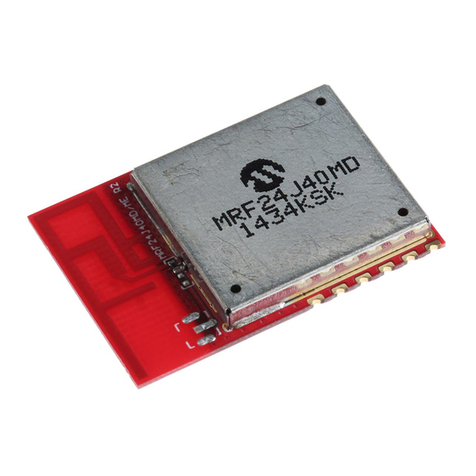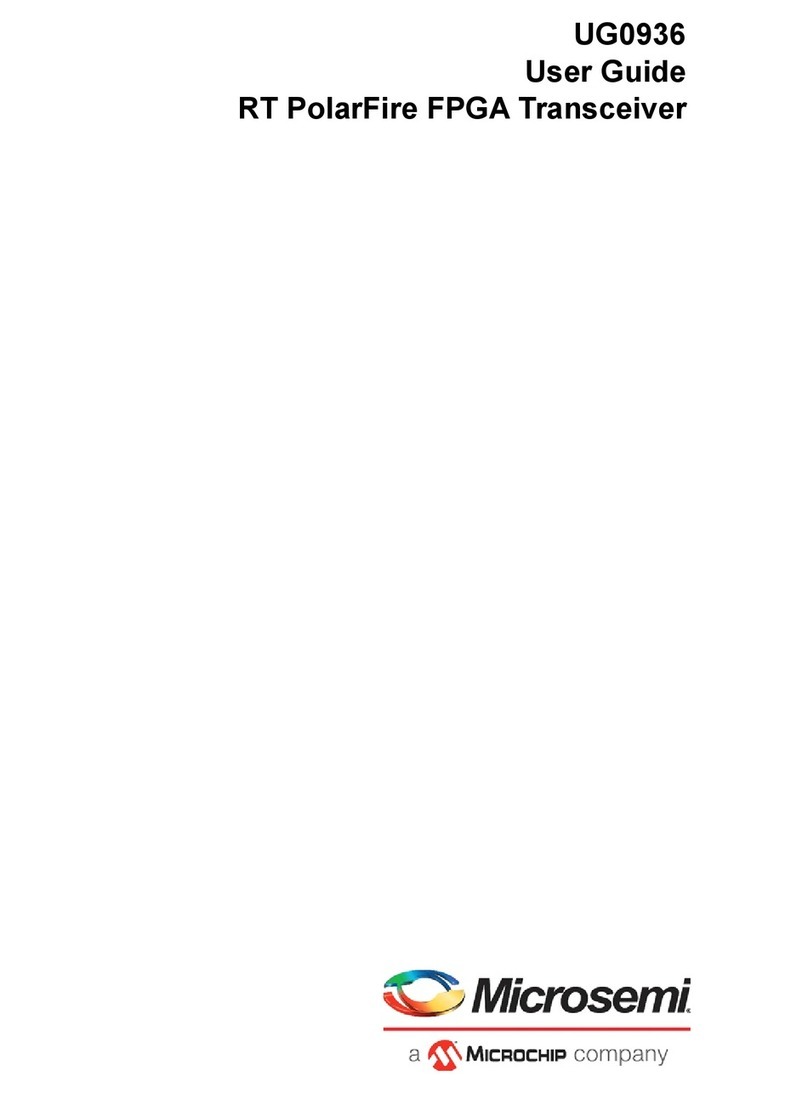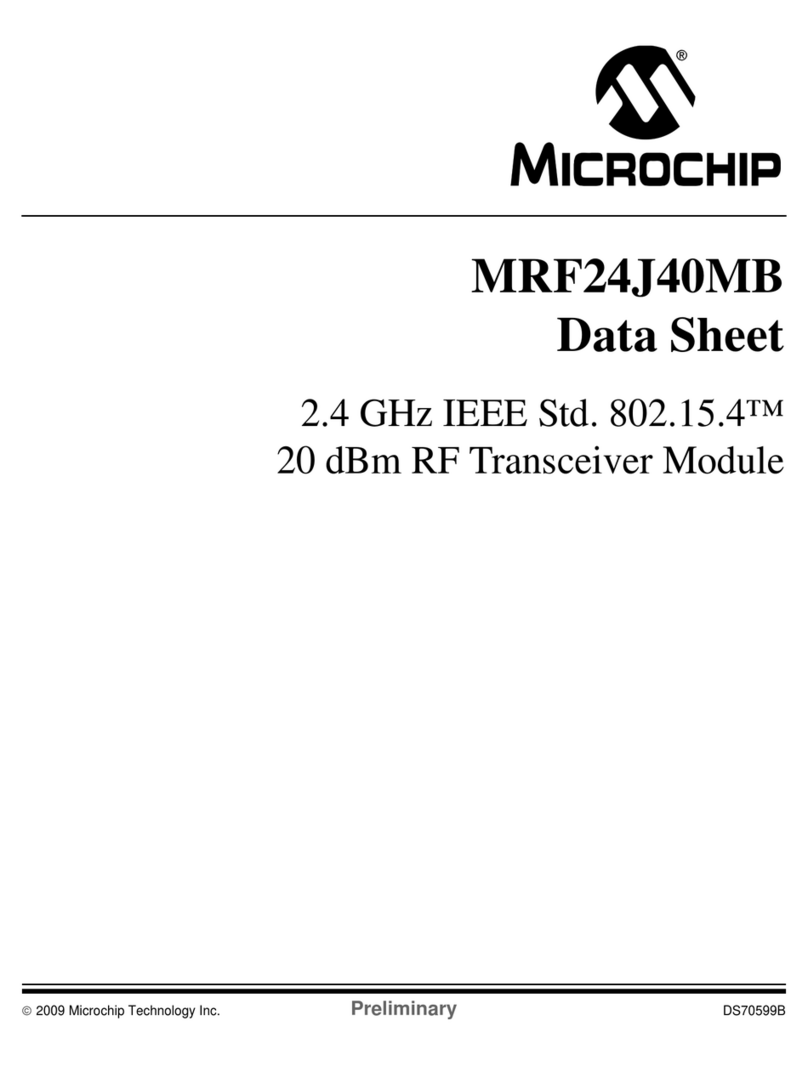
RN2903
DS50002390K-page 6 2015-2021 Microchip Technology Inc.
2.0 GENERAL SPECIFICATIONS
Table 2-1 provides the general specifications for the
module. Table 2-2, Ta bl e 2- 3 and Tab le 2 -4 provide the
electrical characteristics, current consumption and
dimensions of the module, respectively. Table 2-5
shows the RF output power calibration data. Table 2-6
shows the RF output power at different supply voltages
and temperatures.
TABLE 2-2: ELECTRICAL CHARACTERISTICS
TABLE 2-1: GENERAL SPECIFICATIONS
Specification Description
Frequency Band 902.000 MHz to 928.000 MHz
Modulation Method FSK, GFSK and LoRa® Technology modulation
Maximum Over-the-Air Data Rate 300 kbps with FSK modulation; 12500 bps with LoRa Technology modulation
RF Connection Board edge connection (castellated PCB pads for reliable soldering)
Interface UART
Operation Range Up to 15 km coverage at suburban; up to 5 km coverage at urban area(2)
Sensitivity at 1% PER -146 dBm(1)
RF TX Power Adjustable up to max. +18.5 dBm on 915 MHz band(3)
Generated Conductive
Harmonics Level
Below -70 dBm
Temperature (operating) -40°C to +85°C
Temperature (storage) -40°C to +115°C
Humidity 10% ~ 90% non-condensing
Note 1: Dependent on modulation settings, Receiver Bandwidth (RBW) and Spreading Factor (SF).
2: Subject to environmental conditions.
3: TX power is adjustable. For more information, refer to the RN2903 LoRa® Technology Module Command
Reference User’s Guide (DS40001811).
Parameter Min. Typ. Max. Units
Supply Voltage 2.1 — 3.6 V
Voltage on any pin with respect to VSS (except VDD and RESET)-0.3 — VDD+0.3V
Voltage on VDD with respect to VSS -0.3 — 3.9 V
Voltage on RESET with respect to VSS 0 — +11 V
Input Clamp Current (IIK) (VI < 0 or VI > VDD) — — +/-20 mA
Output Clamp Current (IOK) (VO < 0 or VO > VDD) — — +/-20 mA
GPIO sink/source current each — — 25/25 mA
Total GPIO sink/source current — — 200/185 mA
RAM Data Retention Voltage (in Sleep mode or Reset state) 1.5 — — V
VDD Start Voltage to ensure internal Power-on Reset signal — — 0.7 V
VDD Rise Rate to ensure internal Power-on Reset signal 0.05 — — V/ms
Brown-out Reset Voltage 1.75 1.9 2.05 V
Logic Input Low Voltage — — 0.15 x VDD V
Logic Input High Voltage 0.8 x VDD — — V
Input Leakage at <25°C
(VSS<VPIN<VDD, Pin at high-impedance)
—0.150nA
Input Leakage at +60°C
(VSS<VPIN<VDD, Pin at high-impedance)
—0.7100nA
Input Leakage at +85°C
(VSS<VPIN<VDD, Pin at high-impedance)
—4200nA
RF Input Level — — +10 dBm
Downloaded from Arrow.com.































